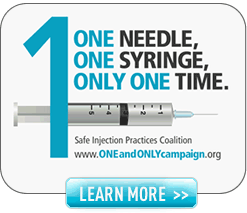Steve Langan shares his experiences of the recent annual meeting of the Council of State and Territorial Epidemiologists

Kimberly New, JD BSN RN, President, Tennessee Chapter of the National
Association of Drug Diversion Investigators
It was a valuable experience, attending the CSTE—Council of State and Territorial Epidemiologists—annual meeting, June 22-26 in Nashville. We admire the many public health leaders and epidemiologists with whom we have collaborated or brushed shoulders over the years. And we had the opportunity to meet and connect with many others, to put a face to a name or to gain a new connection.
It goes without saying that epidemiologists, “hospital detectives,” have had an important role to play in response to the many outbreaks that have occurred in the United States over the years. Now, we believe that they and their public health leaders are clearly up to the challenge of helping HONOReform and its many partners prevent a serious and widespread public health problem—drug diversion, particularly of injectable medications.
If you are included in the broad realm of CSTE—or are a concerned citizen—I encourage you to take a look at their web site…and to make an inquiry. Please let us know if we can help you make this approach. Here is the website:
http://www.cste.org
Three full sessions at CSTE, including a morning Roundtable on the last day of the conference, were dedicated entirely to drug diversion prevention. This issue has reached, has exceeded, the tipping point. I believe we owe this new level of awareness of an issue that has been hidden and concealed to a variety of key colleagues, including patient advocate Lauren Lollini, co-editor of this blog, and Kim New, a hard-working drug diversion prevention consultant who works with the safety group NADDI (National Association of Drug Diversion Investigators).
In her June 20, 2014, blog on CDC Safe Healthcare blog, Kim lays out the steps on how to best prevent, detect and respond to drug diversion in facilities:
http://blogs.cdc.gov/safehealthcare/2014/06/20/drug-diversion-defined-steps-to-prevent-detect-and-respond-to-drug-diversion-in-facilities/
Kim and other experts on the Drug Diversion Prevention Committee are making a difference, providing extensive awareness efforts and, in many cases, stating the solutions to the ongoing problem of drug diversion.
To truly make a difference at the federal level—a goal of our committee—we need the support of the states.
And we have it.
Representatives of four of the states affected by three of the recent devastating outbreaks caused by unchecked and unmitigated drug diversion were active and in full force at CSTE. On behalf of HONOReform and our many partners on the Drug Diversion Prevention committee, I applaud representatives of the health departments in Colorado, Maryland, Minnesota and New Hampshire for their full support of drug diversion prevention—and the leadership, which has come in a variety of forms.
In an upcoming blog post, I will detail many of the advances on drug diversion prevention that have been led by representatives of these states. When our committee makes its approach later this year leadership of HHS at the federal level—to FDA, CMS, CDC, OSHA, DEA, many others—all of whom we will ask to work together to help us solve this ongoing issue—the hard work of these public health leaders will be crucial, valuable.
Patients throughout the United States deserve this close attention, at the national level, to drug diversion prevention.

